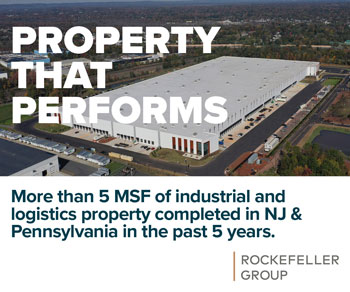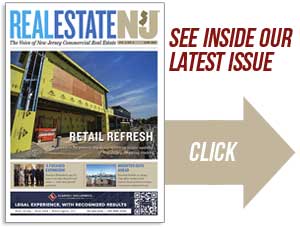Real Estate NJ set out to identify the biggest public policy issues for commercial real estate, as New Jersey begins a new legislative session and a new administration under Gov. Phil Murphy.
Here are the issues identified by Carol Ann Short, CEO of the New Jersey Builders Association:

Affordable housing
Affordable housing is an issue that remains in a state of flux in New Jersey. After approximately 16 years of inaction by the Council on Affordable Housing and an unsuccessful attempt at a legislative resolution, the New Jersey Supreme Court ruled in 2015 that the delays had gone on too long and ordered towns to go directly to the trial court judges to settle affordable housing disputes. Although there has been some progress in the legal settlements reached thus far, hundreds of other declaratory judgment actions remain pending. Notwithstanding the absence of a final resolution, the New Jersey Builders Association (NJBA) believes that the responsibility now firmly rests within the judiciary, which to date has expended a tremendous amount of time, energy and resources to this effort. The NJBA remains optimistic that through the resolution of this litigation or the settlements, New Jersey’s municipalities will engage in their shared responsibility to meet the Mount Laurel constitutional obligation to provide a realistic opportunity for their “fair share” of affordable housing for low- and moderate-income people.
Previous regulations adopted to implement the Fair Housing Act included provisions which encouraged municipalities to eliminate cost-generative provisions both in their ordinances and in their procedures for the approval of developments that include affordable homes. The goal of the regulations was to expedite hearings and facilitate special meetings for affordable projects while encouraging the elimination of cost-generative requirements and procedures. The Municipal Land Use Law should be amended to implement procedures with statewide application which support and encourage the needed development of affordable housing. There should also be other statutorily mandated means of reducing the costs of construction of affordable housing to developers, including reduced utility hook-up fees charged by municipal and regional authorities and a discount on the extent and costs of off-site improvements charged to inclusionary or 100 percent affordable projects upon which such approval is conditioned.
Fixing the land use process
There needs to be a concerted effort, coordinated among the various interest groups and key stakeholders to comprehensively re-examine New Jersey’s dysfunctional and fragmented land use process with a goal of eliminating often competing and conflicting review processes. The local land use regulatory system represents just one part of the process for securing all permits and regulatory approvals for development projects, regardless of the type of development or nature of the applicant. Oftentimes, certain features or aspects of the new development or redevelopment project will require the review and approval by various agencies and at different levels of government. For example, the design of storm water management facilities that are necessary for nearly all developments can include features such as drainage pipes, outlet structures, detention basins, retention ponds, infiltration swales, rain gardens, rooftop storm water features, etc. Not only do these features need to be detailed on the engineering plans submitted and reviewed by a municipal body, but they almost always trigger a review by the county engineer, a soil conservation district, and the New Jersey Department of Environmental Protection (NJDEP) for compliance with statewide storm water management regulations, including the Flood Hazard Area program, CAFRA and Freshwater Wetlands permits. Other regional jurisdictions such as the Pinelands Commission and the Highlands Council, likewise regulate the storm water aspects of development projects. As the program rules for these different agencies are specific to their respective statutory and regulatory directives, there are often conflicting objectives sought in terms of design outcomes for storm water facilities.

Other aspects of development projects can be impacted by multiple reviews, including the design and approval of water and sewer systems, roadways, parking lots, environmental constraints and more. There should be a comprehensive examination of the various overlapping jurisdictions and regulatory schemes that can frustrate and elongate the application process. Further, we should ensure that governmental entities are properly staffed and are working efficiently to meet the deadlines and timetables of their oversight responsibilities. New Jersey remains at a competitive disadvantage with neighboring states, especially as compared to many southern states where development projects are usually welcomed and expedited in months rather than years. An examination of the meaningful ways to rectify the conflicting, inefficient or duplicative programs that exist in our state should be undertaken, including more ‘permit by rule’ programs and other approaches that will facilitate economic growth.
Encouraging redevelopment
Due to the scarcity of land, redevelopment, particularly catalytic mixed-use development, is the sector with the greatest potential for growth and will likely comprise a large portion of new development in New Jersey for the foreseeable future. Yet, there are barriers that impede this type of development and many of the state’s policies do not reflect the evolution of land use patterns. Policies need to be revised to foster redevelopment. Just as one size does not fit all, one type of program or regulation may not meet redevelopment needs. We should provide incentives, both financial and regulatory, to encourage redevelopment that will produce critically needed housing across the economic spectrum for the state’s growing population. In addition, we should also be mindful of initiatives that would stifle or make more difficult the revitalization of the distressed areas of our state.
Continuing site remediation reform
Since the passage of the 2009 Site Remediation Reform Act (SRRA), additional modifications to the regulatory and legislative framework have become necessary to further incentivize and expedite more cleanups of brownfield and other redevelopment sites. To ensure the continued success of the state’s site remediation program, keeping remediation and redevelopment work on a progressive path forward, the NJBA plans to actively participate in stakeholder discussions led by the Licensed Site Remediation Professionals Association. Several of the more significant issues that have been identified since the implementation of the SRRA, include the recognition of relief from certain remediation requirements for those who voluntarily assume responsibility for public health concerns from contaminated sites, the utilization and incorporation of more ‘green and sustainable remediation’ as a more progressive and forward-looking approach for environmental concerns, procedures to enable sites once under the NJDEP’s ‘direct oversight,’ but which have subsequently come into compliance to move more expeditiously through the remediation process, elimination of administrative obstacles to remediation completion and diligence investigation and a resolution to the Alternative Fill and Dredge Materials issue. NJBA reiterates the goal of ensuring the continued success of the site remediation program through some necessary modifications and looks forward to engaging in a stakeholders’ process to more fully vet the complex issues with the regulated community, the NJDEP and other interested stakeholders.










